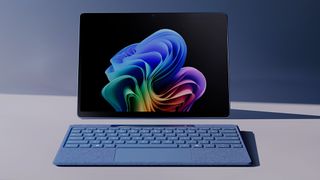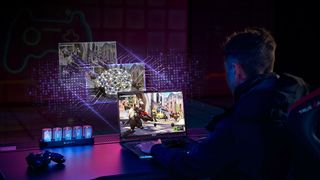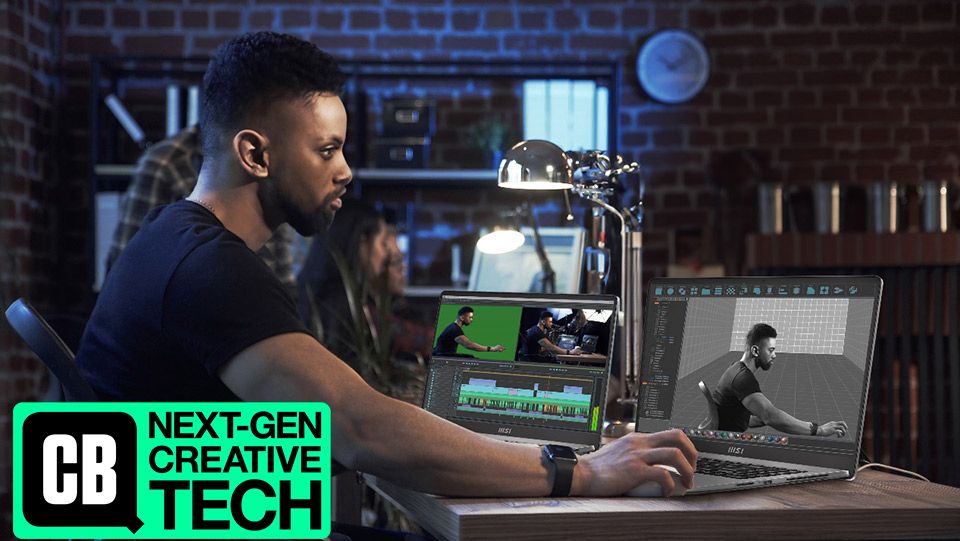By now, you’ve probably heard of AI laptops. Chances are that your first impression may have been to assume that the term was a bit of marketing gimmick. But, as we’ve seen in our piece on what is an AI laptop? and our comparison of the best AI laptops on the market, NPU-powered laptops have some real potential advantages for many users, including creatives.
With most of the major laptop brands now focusing heavily on AI laptops, we’re going to be hearing the phrase more and more, and AI laptops are likely to become the norm. But how will the technology advance? In this article, we explore the hardware’s current potential and what the future of AI laptops may look like.
This article is part of our Next Gen Creative Tech week.
AI laptops today

To recap for those still wondering what makes an AI laptop different from a non-AI one, the key is the NPU, or neural processing unit. Standard laptops have a central processing unit, or CPU. This is the main processor: the circuitry that carries out instructions for things like arithmetic, logic and input/output operations. Laptops also have a graphics processing unit or GPU, specialised electronic circuitry for digital image processing and accelerating computer graphics. This is a separate component in more powerful laptops or integrated in the CPU on more economic devices.
An NPU is a newer class of specialised hardware designed to accelerate artificial intelligence and machine learning applications, including artificial neural networks. On consumer-focused AI laptops, it’s usually integrated in the CPU, as in the cases of the AMD’s Ryzen 9 8040 CPUs and Qualcomm’s Snapdragon X Elite processors.
What will AI laptops be able to do?
AI laptops allow generative AI models to be run more efficiently locally on the device. For example, you could run the AI image generator Stable Diffusion on your laptop rather than in the cloud. But while NPUs are most associated with AI-driven tasks, they are optimised for data-heavy parallel computing and can more generally process masses of multimedia data like video, images and data for neural networks.
For the moment, software manufacturers have a bit of catching up to do, and there aren’t so many programs taking advantage yet. But laptop manufacturers are convinced that AI laptops will become the norm and will provide benefits to general users for everything from interacting with AI chatbots like Microsoft‘s Copilot to speeding up specific tools in creative software. For more specialist use cases, AI laptops can also be used for research through knowledge mining huge reference sets of data.
The future of AI laptops for general productivity
With major chip makers like Intel, AMD and Qualcomm putting NPUs on their latest processors, the use of AI laptops is almost certain to accelerate. And like CPUs and GPUs, NPUs are likely to get more powerful with each new iteration, which will mean more efficient, streamlined AI processing.
AI laptops will be able to perform AI tasks faster, resulting in quicker data processing times and more convenience. The idea is they will also be able to learn and adapt to users’ needs, using machine learning algorithms to enhance user experience, optimise performance based on use and personalise interactions.
For the moment, the majority of general users might not find themselves reaching for the Copilot button on an AI laptop very often. But in the longer term, the ability to interact with an AI chatbot from startup is likely to bring benefits for productivity, which will probably become ubiquitous.
We will be able to interact by voice to ask our laptop to summarise documents for us, schedule our meetings or recommend a recipe to cook or a movie to watch based on our personal tastes. AI-powered tools will be able to automatically apply noise cancellation when we enter a video call, make it look like we’re making eye contact and translate both text and audio automatically.
And because this would be on device rather than online, it would potentially be more convenient and more secure than using browser to use the likes of ChatGPT or Midjourney. Another security benefit will be AI facial recognition to prevent non-authorised use of a laptop. And since NPUs lessen the load on CPUs and GPUs, AI laptops should also lead to faster computing in general.
@creativebloqofficial
For an idea of what AI laptops might look like, consider the Lenovo Auto Twist AI PC. Only a concept for now, it blurs the line between laptop and robot. It responds to voice commands and, using its dual rotation automatic hinge, can open the lid, enter tablet mode and close itself, without the user having to touch it. Our ecommerce writer took part in a demo at IFA Berlin (see the video above) and found it to be a surreal experience. But opening and closing the lid on command is the least of what AI PCs will be able to do. Essentially, whatever task you perform on your laptop, it’s likely that NPUs will eventually play a role in how it’s processed.
The future of AI laptops for creatives

There are already some examples of specific tools in creative software that make use of NPUs. DaVinci Resolve, one of the best video editing software programs, can use NPU-acceleration to speed up Magic Mask, while the music mixing software djay Pro uses it for NeuralMix.
Adobe has plans to optimise future versions of Premiere Pro for NPUs, and, given Adobe’s commitment to AI, it’s likely that it will find uses for the technology to enhance the speed of certain tasks in other Creative Cloud apps too. This could mean faster video editing and AI filters.
AI laptops should also make it easier for creatives to organise, categorise and search through their assets by automatically tagging content according to things like subject, theme and location simplify file management and make it easier to find the photos you want from your last shoot or a design iteration that a client’s asked to see again. Asus has already launched its StoryCube application, which does some of this now.
AI laptops could also become a personal assistant for brainstorming, allowing us to toss ideas back and forth with our device without having to open ChatGPT in our browser. Creatives may also start to use AI laptops as to bounce ideas of. Sticking with Asus, it’s launched MuseTree, a king of sandbox for ideas with on-device AI image generation built in.

The future of AI laptops for gaming

AI laptops are also entering the gaming sphere. MSI’s AI Engine can automatically detect different user scenarios to activate suitable performance settings, sound effects and display modes, for example, switching to Extreme Performance Mode. Updates are likely to reduce the amount of changes that a user has to make automatically. AI laptops could also allow voice interaction in-game, allowing the player to consult their laptop during scenarios in the title they’re playing.
Self-healing laptops
Another benefit we’re likely to see in the future of AI laptops is a major change in support. Dell has been exploring self-healing automation, using AI to diagnose and resolve issues without requiring human intervention. Using telemetry to find issues in both hardware and software layers, AI could remotely fix problems and reduce downtime in both business and consumer devices.
Are AI laptops here to stay?
Considering that the likes of Asus, Dell, HP and MSI are planning to include NPUs across their flagship devices, it’s safe to stay that AI laptops are here to stay. The tech market analyst Canalys expects 48 million AI-capable PCs to ship worldwide this year. That would be about 18% of all PC shipments. According to Statista, the proportion is expected to rise to 40% in 2025 and 60% by 2027. If the term ‘AI laptop’ disappears into the past as a mere marketing buzzword, it will simply be because every laptop has become an AI laptop, and the AI has started to become more seamless and invisible
This article was created as part of Creative Bloq’s focus on Next-Gen Creative Tech in association with Nvidia.
